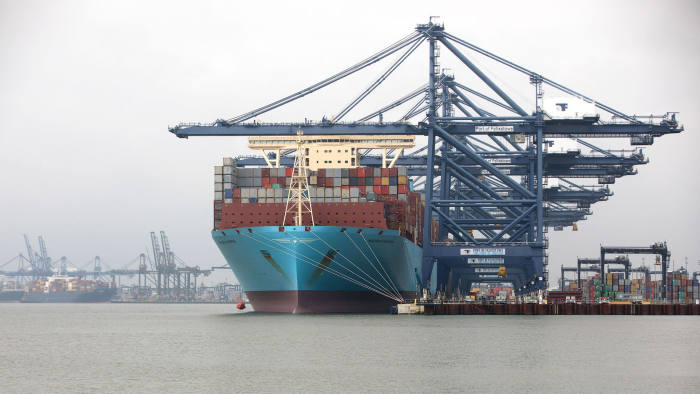Andrew Thaler for the Deep-sea Mining Observer
While the development of a deep-sea mining code may have slowed to a crawl over the last two years, the mining contractors have been hard at work pushing the limits of marine robotics. Deep-sea mining contractors cleared several key technical milestones in the race to commercialize the deep seafloor. These advancements bring the technological reality of deep-sea mining closer than ever before. However, several milestones remain to be reached before any contractor is ready to plant their flag on the seafloor and plumb the depths at commercial scale. At the same time, next generation battery technologies creep towards mass adoption, threatening the industry’s core value proposition.
The Contractors
The Metals Company, in partnership with AllSeas, reached several notable milestones over the last quarter. In early March, they announced the first successful wet test of their pilot nodule collecting vehicle, deploying it from the deck of their flagship, The Hidden Gem, lowering it to the seafloor, and successfully recovering it. Following that protected water trial, The Metals Company conducted an open ocean deployment in the North Sea, testing a variety of systems under demanding ocean conditions. “This North Sea drive test is a key milestone that not only shows that our collector can be remotely operated in open seas but that it can do so in parallel motion with the Hidden Gem’s dynamic positioning system,” said The Metals Company CEO Gerard Barron in a press release.
GSR has been relatively quiet on the technology front since last year’s Patania II trial, during which the prototype nodule collector was stranded, and then successfully recovered from the seafloor. GSR intends to return to the Clarion-Clipperton Fracture Zone in 2024 to conduct the next series of trials, involving a full-scale seafloor nodule collector. The contractor was also recently awarded an exploration license for areas within the Cook Islands exclusive economic zone.
One major technological hurdle that has yet to be cleared is the successful testing of a full riser and lift system at operating depth. Riser and lift systems allow mining tools on the seafloor to pump ore to the surface vessel for processing. Riser and lift systems are an essential component of currently developed deep-sea mining tools, and also one of the most complex.
The Metals Company will embark on an expedition to the Clarion-Clipperton Fracture Zone later this year to conduct more comprehensive tests of its nodule collector and initiate the industry’s first tests of a riser and lift system to commercial operational depth.
Impossible Mining is a relative newcomer to the deep-sea mining industry, but with experienced leadership at the helm and a novel approach to nodule collecting. Rather than harvesting polymetallic nodules from the seafloor using a benthic crawler and riser and lift system, Impossible Mining proposes neutrally buoyant AUVs that glide just above the seafloor using AI-powered systems to identify nodules and recover them, piece by piece. This system will also allow them to leave heavily colonized nodules in place. While still in the early stages of development, Impossible Mining argues that their system would have a significantly lighter impact on the seafloor than current contractor proposals.
India continues to press forward with its Deep Ocean Mission. After successful tests of a prototype personnel sphere to 600 meters in late 2021, the Samudrayaan project to build a 6000-meter-rate human-occupied submersible was formally launched, with a budget of almost $580 million over five years. This comes close on the heels of India’s National Institute of Ocean Technology successfully testing a seafloor crawler robot to a depth of six kilometers. India’s Deep Ocean Mission represents a significant financial commitment to advancing the nation’s deep-submergence capabilities.
The Privatization of Exploration
More humans have visited the bottom of the ocean since 2020 than had in the preceding century. Deep-sea explorer and current owner of the only full-ocean-capable submersible in private hands, Victor Vescovo, has conducted a series of dives across the world, mapping the deepest points in five oceans and contributing high resolution bathymetry to global seafloor databases. His team has also begun campaigning for policy change in the high seas, pushing for reduced use of disposable tethers and umbilicals, which pose a navigational challenge to submersibles and present s potential environmental hazard to the deep seafloor. His team has led multiple expeditions, both scientific and recreational, to the bottom of the Mariana Trench.
Meanwhile, the Pisces VI, a 2000-meter-rated submersible that was once part of the US research fleet, was acquired by Scott Waters, an entrepreneur from Kansas, refurbished and upgraded, and deployed in the Canary Islands, where it now conducts dives for scientists, documentarians, explorers, and tourists. Private individuals, in 2022, now have greater access to deep submergence technologies than at any point in the history of ocean exploration.
The Batteries
The technology that may have the most significant impact on the development of the deep-sea mining industry over the next decade is not directly related to mining. Though it has a decades-long lead, deep-sea mining is in an ever-tightening race against next-generation solid-state batteries. Solid state batteries forgo the liquid electrolyte used in modern lithium batteries in favor of a solid medium. This allows for batteries that are more energy dense, charge faster, and, of most relevance to deep-sea mining stakeholders, require not rare metals in their production. In 2019, IBM unveiled a solid-state battery that was free of nickel, manganese, and cobalt. Toyota has announced a target of 2025 to begin selling hybrid vehicles with solid-state batteries.
More recently, Nissan has announced a partnership with NASA to develop and implement its own solid-state battery technology. Nissan will open its first solid-state battery plant in 2024, with plans to launch an electric vehicle powered by their solid-state batteries in 2028. Volkswagen is also looking to launch pilot battery plants this decade.
More than any other singular development, commercial production of cobalt- and nickel-free solid-state batteries would undermine the core value proposition of deep-sea mining–that harvesting resources from the seafloor is the most sustainable way to unlock the metals needed for decarbonizing the world’s vehicle fleets.
Featured Image: Engineers inspect the tracks of the pilot nodule collector vehicle, photo provided by The Metals Company via Press Release.






